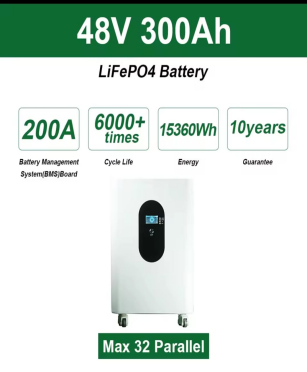Save 90% of your electricity bill! Household energy storage guide: Home photovoltaic + battery system configuration plan
 Energy issues are becoming more and more prominent. Problems such as rising electricity prices, frequent power outages, and increased environmental protection requirements have made household users face many challenges in electricity use. At the same time, the limitations of ordinary photovoltaic systems have gradually emerged. So, how can we effectively deal with these difficulties and achieve efficient use and economic savings of household energy? In fact, the answer lies in building a complete set of household photovoltaic + energy storage systems. This system can not only help household users get rid of excessive dependence on traditional power grids, but also bring tangible economic benefits while saving energy and reducing emissions. Next, this article will analyze the secrets of household photovoltaic + energy storage systems in detail from multiple dimensions such as configuration plans, real cases, pitfall avoidance guides, and policy dividends, to help everyone move towards a new era of energy independence and economic efficiency.
Energy issues are becoming more and more prominent. Problems such as rising electricity prices, frequent power outages, and increased environmental protection requirements have made household users face many challenges in electricity use. At the same time, the limitations of ordinary photovoltaic systems have gradually emerged. So, how can we effectively deal with these difficulties and achieve efficient use and economic savings of household energy? In fact, the answer lies in building a complete set of household photovoltaic + energy storage systems. This system can not only help household users get rid of excessive dependence on traditional power grids, but also bring tangible economic benefits while saving energy and reducing emissions. Next, this article will analyze the secrets of household photovoltaic + energy storage systems in detail from multiple dimensions such as configuration plans, real cases, pitfall avoidance guides, and policy dividends, to help everyone move towards a new era of energy independence and economic efficiency.
1. Why do ordinary families urgently need photovoltaic + energy storage? In today's era of frequent energy price fluctuations, ordinary families face many problems in electricity use. Electricity bills have skyrocketed: In recent years, global electricity prices have shown a clear upward trend. In 2024, the average global electricity price increase reached an astonishing 15%, and in some European and American regions, the peak-to-valley price difference even expanded to 4 times. This means that household users need to pay high electricity bills during peak hours, and electricity bills account for an increasing proportion of household daily expenses, which has brought considerable pressure on the household economy. Power outage anxiety: The frequency of extreme weather events has increased year by year, resulting in annual power outages of more than 10 hours in some cities in China. Once a power outage occurs, the food in the refrigerator may deteriorate due to long-term power outages, and the mobile phone will lose its communication function due to the inability to connect to the network, which will bring great inconvenience and loss to family life. Environmental pressure: With the global attention to environmental protection, carbon tax policies are gradually being implemented. The carbon footprint generated by household electricity consumption may become an "invisible threshold" in real estate transactions in the future. If the energy consumption and carbon emissions of a house are too high, it may affect the value and transaction of the property. Photovoltaic waste: Many households have installed ordinary photovoltaic systems, but the self-use rate is only 30%-50%. Most of the surplus electricity can only be sold to the power grid at a lower price, which is an economic loss for household users and a waste of photovoltaic resources. It can be seen that for ordinary families, photovoltaic + energy storage system is no longer "pre-consumption", but a "just-needed investment". It can effectively solve the above problems and bring long-term economic and environmental benefits to families.
2. Configuration plan: three core modules of household energy storage system 1. Photovoltaic module - the heart of power generation Photovoltaic module is the core of the entire system, responsible for converting solar energy into electrical energy. In terms of selection, monocrystalline silicon modules have the highest efficiency, up to 24%, followed by polycrystalline silicon modules, with an efficiency of 20%, and thin-film modules are suitable for some special scenarios. When determining the installed power, the following formula can be used for calculation: Installed power (KW) = average daily power consumption (KWh) ÷ local average daily effective sunshine hours × 1.2 (redundancy coefficient). For example, if a family's average daily power consumption is 30 degrees and the local average daily effective sunshine hours are 4 hours, then the installed power is 30÷4×1.2 = 9KW. It is worth mentioning that Huawei's intelligent component controller technology can effectively increase power generation by 10%, avoid the "barrel effect", and allow each photovoltaic panel to perform at its best. 2. Energy storage battery - Energy Bank The function of the energy storage battery is to store the electricity generated by the photovoltaic components for use when needed. Its capacity calculation formula is: Energy storage capacity (KWh) = (nighttime electricity consumption + emergency demand) × 1.5 (safety factor). Assuming that a family's nighttime electricity consumption is 8 degrees and the emergency demand is 2 degrees, then the energy storage capacity is (8+2) × 1.5 = 15KWh. Lithium iron phosphate battery is currently an ideal choice for energy storage batteries. Its cycle life can reach 6,000 times. It can still work normally in a low temperature environment of minus 20℃, and its cost is 30% lower than that of ternary lithium batteries. Huawei's LUNA solution adopts a modular design, supports flexible expansion of 5-30KWh, and the wall-mounted installation method also saves space, which is very suitable for home use. 3. Smart system - Energy brain The smart system is the "smart center" of the entire photovoltaic + energy storage system. It can achieve peak-valley arbitrage, that is, charging the battery during the valley period (when the electricity price is low, such as 0.3 yuan/kWh), and discharging it for home use during the peak period (when the electricity price is high, such as 1.2 yuan/kWh), and the daily price difference income can exceed 50 yuan. At the same time, the smart system also has an intelligent switching function. At the moment of power outage (within 3 seconds), it can quickly switch to the energy storage power supply mode to ensure that the air conditioners, refrigerators and other electrical appliances in the home will not stop working due to power outages, effectively protecting the electrical appliances and the items in them. With Ankerui's Home EMS system, users can monitor power generation and power consumption data in real time through mobile phone APP. The system will automatically optimize the power consumption strategy based on these data, thereby increasing profits by 30%.
3. How can a 12KW system save tens of thousands of yuan per year? Mr. Zhang from Jiangsu is a good example. He installed a photovoltaic + energy storage system of 12KW monocrystalline silicon modules + 15KWh lithium iron phosphate batteries + hybrid inverters, with a total investment of 115,000 yuan (including installation costs). This system can generate 18,250 kWh of electricity per year, with an average of 50 kWh per day. According to the local electricity price of 0.5 yuan/kWh, it can save 9,125 yuan in electricity bills per year. At the same time, through peak-valley arbitrage, the price difference can be used to obtain 6 kWh of electricity per day, which is 2,190 yuan a year. In addition, this system can also achieve 9 tons of carbon emission reduction per year, and may enjoy carbon trading dividends in the future. Overall, Mr. Zhang's system has a payback period of about 8-10 years (including government subsidies), and then it will be a pure profit stage. In the long run, the economic benefits are very considerable.
4. Pitfall Avoidance Guide: 3 Pitfalls that 90% of Families Have Tried When choosing and installing a photovoltaic + energy storage system, many families will fall into some misunderstandings. Blind pursuit of large: Some families did not make reasonable calculations based on actual needs when configuring energy storage batteries, resulting in energy storage capacity far exceeding actual needs. For example, some families installed a 20KWh battery, but it is often in a semi-idle state in daily use, which not only wastes resources but also increases unnecessary investment costs. Ignoring heat dissipation: The installation environment of the battery has a great impact on its life. If the battery is installed in a poorly ventilated place such as a closed basement, the battery life may be shortened by 40%. The optimal operating temperature range of lithium iron phosphate batteries is 0-35℃, so you must pay attention to heat dissipation during installation to ensure that the battery is in a good working environment. Low price trap: Some brands of inverters on the market are very low in price, but the quality is not up to standard. For example, a certain brand of inverter does not have AFCI arc protection, which will increase the risk of fire by 200%. When choosing equipment, you can't just look at the price, but also pay attention to quality and safety. Experts suggest choosing brands with four layers of safety protection, such as Huawei and Ankerui, whose product quality and after-sales service are guaranteed, and the warranty period is at least 10 years, which can provide long-term and stable energy solutions for home users.
V. Policy dividends: Don't miss these subsidies in 2025! In order to encourage home users to install photovoltaic + energy storage systems, the government has introduced a series of subsidy policies. At the national level, a subsidy of 0.3 yuan/watt is given to household photovoltaic storage systems, with a maximum subsidy of 30,000 yuan per household. This policy will last until December 2025. Local governments are also increasing subsidies. For example, Zhejiang Province provides an additional subsidy of 0.1 yuan/kWh for photovoltaic power generation; Guangdong Province provides a subsidy of 500 yuan/KWh according to the capacity of the energy storage system. In addition, the carbon emission reduction generated by the household photovoltaic system can also be converted into personal carbon points, which is expected to participate in the carbon trading market in the future, further increasing the benefits of home users. In short, photovoltaic + energy storage systems have many advantages and benefits for home users. It can not only help families save electricity bills, cope with the risk of power outages, and meet environmental protection requirements, but also achieve a good return on investment with the support of policy subsidies. We hope that the majority of household users can seize this opportunity and move towards an energy-independent, economical and efficient lifestyle as soon as possible.






